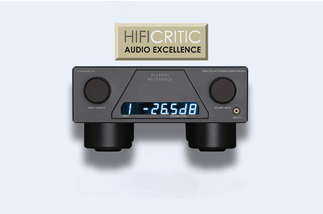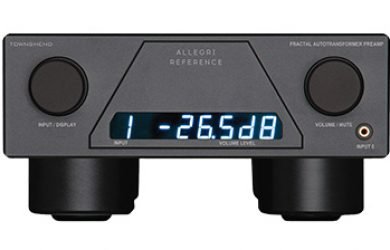Due to space considerations in the magazine it is impossible for me to list every component in the System Used boxes in the reviews, be they equipment supports or types of cable that connect up my hi-fi systems. Most are products that have impressed me during the reviewing process and I have acquired them because of what I consider to be their positive effects upon the sound of my hi-fis. There are two components on my upstairs system that 1 haven’t reviewed ( because they have previously been covered by this magazine) that have become permanent fixtures over the last couple of years though, these being a pair of Townshend Maximum Super Tweeters.Their frequency response extends from 6kHz to 90kHz. I was initially somewhat sceptical about these.After all, we have been told over the years by respected scientific opinion that the limits of human hearing are approximately 20-20,000Hz when our hearing is in good condition.Although 1 have done my best to protect my ears in noisy environments ( I always take a pair of ear plugs to music events, just in case it is deafeningly loud) 1 am in my late 40s and there is a natural deterioration in human hearing as we get older.Therefore I was both pleased and intrigued to discover that running my system with the Supertweeters in place made a noticeable difference to the sound. Obviously, given the frequency response of these components, I expected any alteration to the sound to be focussed on the midrange and the treble, but was pleasantly surprised to find that this change included an opening up of the bass sound as well, adding layers of texture to its tonal qualities.What also surprised me was the fact that high-frequency sound, such as record surface noise, instead of being enhanced, was actually reduced in perceived presence and became less intrusive. I was even more taken aback to discover that this effect was consistent whether I was playing full bandwidth modern recordings or 78s. The latter are supposed to have a limited frequency response (generally regarded as 3-5kHz for the best acoustic recordings, rising to I 2kHz for electrically recorded discs up to the late ‘ 40s, and around 15kHz for later ones, particularly Decca FFRR records) topped with a mass of crackle and hiss.When played with the Supertweeters in use, the clarity and range of the music seemed to be increased and non-musical sonic disturbances appeared quite drastically reduced. So, over the last couple of years 1 have spent spare moments trawling the internet for answers to this seeming conundrum. Some theories I have discounted since they are not backed by any form of scientific research — including one suggesting the hairs which begin to sprout from our ears later in life are nature’s way of picking up high frequencies to compensate for hearing loss. Max Townshend ( manufacturer of the Supertweeters) pointed me in the direction of some research carried out in the 1990s by James Boyk of the California Institute of Technology called “There’s Life Above 20 kilohertz!”. (www.cco.caltech. edu/—boyk/spectra/spectra.htm ). In this paper he explores the ultrasonic frequency response of various instruments, including the trumpet, french horn, violin, oboe, piano, crash cymbal, snare drum, claves and human voice as well as a jangled set of keys. All of the above demonstrated various levels of power above 20kHz. This varied from the french horn showing harmonics up to 55kHz, with 0.1% of its power being above 20kHz, through to the non- harmonic sounds of jangled keys ( recording at least 10dB above the background noise up to 60kHz, with 68% power over 20kHz) and the crash cymbal (+ 10dB up to I 02kHz, with 40% power over 20kHz). Human speech sibilants displayed greater than 10dB over the nose floor up to 40kHz, with 1.7% of ppower over 20kHz. Having established these sounds existed in the supersonic spectrum, James Boyk then referenced some research by Tsutomi Oohashi, Emi Nishina, None Kawai,Yoshitaka Fuwamoto and Hiroshi Imai entitled “High- Frequency Sound Above the Audible Range Affects Brain Electric Activity and Sound Perception” (Audio Engineering Society preprint No. 3207 – 91st Convention, New York City – Abstract page 2.).This established that although we may not perceive our response to ultrasonics as ‘ hearing’ them, we are aware of them and do respond to this form of stimulus.. This was followed by a reference to a paper published in ” Science” where Lenhardt et al. report that ” bone- conducted ultrasonic hearing has been found capable of supporting frequency discrimination in normal, older hearing- impaired and profoundly deaf human subjects.” They also point out that the saccule has neural cross- connections with the cochlea. So having established that both musical instruments and our response to their stimuli extend into the ultrasonic spectrum,1 am now hunting around for further information on how we actually detect these short wavelengths. I shall keep you advised of anything of interest that I may discover..


















